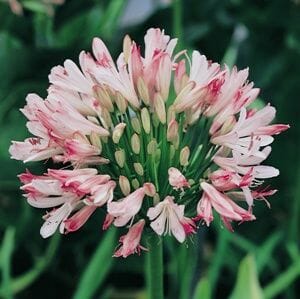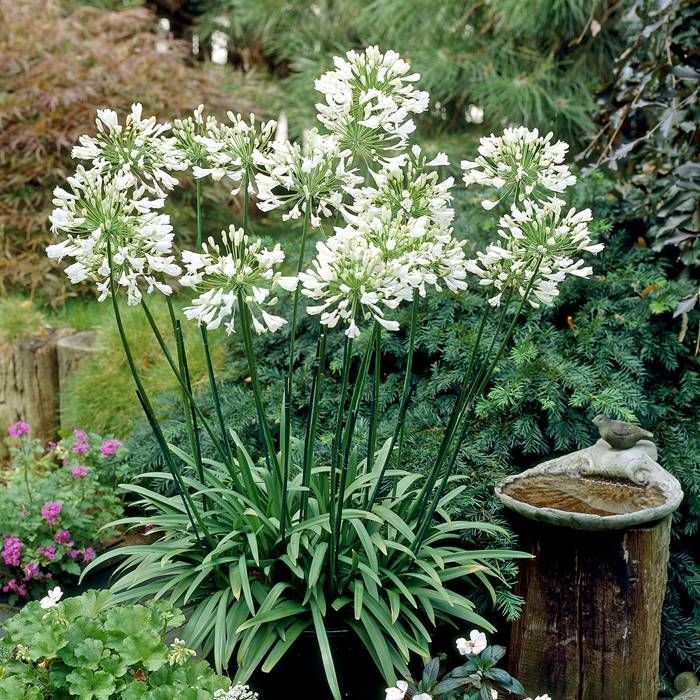Seasonal Agapanthus Care: Preparing for Winter and Summer
Wiki Article
Letting Loose the Secret to Successful Agapanthus Cultivation: Advice for a Flourishing Garden
In the world of gardening, cultivating agapanthus efficiently needs a strategic technique that encompasses numerous facets of plant treatment. By understanding the subtleties of agapanthus cultivation, one can develop a setting where these plants flourish and bloom perfectly.Growing Agapanthus: Best Practices
When growing Agapanthus, appropriate dirt prep work is vital for guaranteeing effective growth and growth of these attractive blossoms. Agapanthus, commonly called Lily of the Nile or African lily, flourishes in well-draining soil with a somewhat acidic to neutral pH level - Agapanthus. Prior to growing, it is important to change heavy clay soils with raw material such as garden compost or peat moss to enhance water drainage and supply important nutrients for the plantsTo grow Agapanthus, choose a place that receives full sunshine to partial shade, as this will promote healthy development and bountiful blooming. Dig a hole twice the diameter of the plant's root sphere and position the Agapanthus at the very same depth it was previously expanding. Gently backfill the opening with soil, pushing down securely to get rid of any air pockets around the roots.
Water the freshly grown Agapanthus thoroughly and proceed to maintain the soil evenly damp, particularly throughout the plant's energetic expanding period. Agapanthus. Using a balanced plant food once a month can better sustain the plant's development and flowering. By complying with these finest methods for planting Agapanthus, you can produce a sensational display screen of these exciting blossoms in your yard
Suitable Soil Conditions for Agapanthus
For ideal development and flowering success of Agapanthus plants, making sure the dirt problems are excellent is crucial. Agapanthus thrives in well-draining dirt with a somewhat acidic to neutral pH degree ranging from 6.0 to 7.0. This type of dirt permits appropriate water drain, avoiding waterlogging which can result in root rot. To enhance soil water drainage, take into consideration including raw material such as compost or peat moss when preparing the growing website. Furthermore, Agapanthus chooses soil that is abundant in nutrients, so integrating a balanced fertilizer throughout the growing season can advertise healthy and balanced growth and vibrant blossoms.
Watering and Fertilizing Tips
To make sure healthy and balanced development and dynamic flowers, appropriate watering and fertilizing methods are vital for successful Agapanthus growing. Agapanthus plants take advantage of routine watering, especially during the check this growing season. It is recommended to water deeply once a week, guaranteeing the soil is damp however not soaked. Throughout warm weather condition or in pots, even more regular watering may be necessary to stop the dirt from drying completely.When it pertains to feeding Agapanthus, a well balanced fertilizer with equal parts nitrogen, phosphorus, and potassium can be used in the springtime to promote healthy development and flowering. Slow-release plant foods are optimal for offering nutrients slowly over a prolonged period. Stay clear of over-fertilizing, as this can bring about extreme vegetation development at the expenditure of flowers.
Additionally, including natural matter like garden compost into the dirt can enhance nutrient degrees and improve dirt structure, assisting in the general health of the Agapanthus plants. By complying with these watering and fertilizing pointers, gardeners can guarantee their Agapanthus plants flourish and generate spectacular display screens of flowers.
Trimming and Deadheading Methods
Correct pruning and deadheading strategies play an important duty in preserving the wellness and aesthetic appeals of Agapanthus plants, complementing the necessary practices of watering and fertilizing for effective growing. Trimming Agapanthus involves eliminating invested flower heads, yellowing or dead fallen leaves, and total shaping of the plant to promote much better development. Deadheading, the process of eliminating faded flowers, not just enhances the plant's appearance yet additionally encourages additional growing.When deadheading Agapanthus, it is recommended to clip off the blossom stem at the base making use of sharp, tidy shears. This procedure redirects the plant's energy from seed manufacturing back right into root and vegetation development, advertising a much healthier and more robust plant. Routine deadheading can prolong the growing duration of Agapanthus and protect against self-seeding, which can cause congestion.
In terms of pruning, Agapanthus normally advantages from a light trim after flowering to clean the plant and motivate fresh growth. Reducing back the invested blossom stems and eliminating any kind of broken or dead vegetation assists preserve the plant's vitality and general appearance. Nevertheless, it is important to prevent cutting into the crown of the plant, as this can damage its wellness.

Protecting Agapanthus From Pests and Diseases
Executing reliable insect Web Site and condition administration strategies is vital to safeguarding the wellness and vitality of Agapanthus plants in growing. One usual bug that affects Agapanthus is the Agapanthus borer, a caterpillar that passages right into the plant, causing damages to the blossoms and fallen leaves.Along with parasites, Agapanthus are susceptible to illness such as origin rot and fungal leaf areas. These concerns can frequently be prevented by guaranteeing correct drainage and preventing overwatering. If indicators of disease appear, affected parts of the plant must be without delay removed to stop more spread. Fungicides might additionally be used as a treatment step, complying with the supplier's her latest blog guidelines carefully. By staying vigilant and dealing with insect and illness problems immediately, garden enthusiasts can help their Agapanthus prosper and thrive.

Final Thought
To conclude, effective growing of agapanthus calls for appropriate growing methods, excellent soil problems, adequate watering and feeding, normal pruning and deadheading, and security from conditions and pests. By complying with these tips and techniques, garden enthusiasts can guarantee a prospering garden filled up with attractive agapanthus flowers. Agapanthus. Bear in mind to maintain constant treatment and focus to detail to promote the wellness and longevity of these sensational plantsWhen growing Agapanthus, proper soil prep work is crucial for guaranteeing effective development and development of these lovely blossoms.Water the newly planted Agapanthus completely and proceed to maintain the dirt evenly moist, particularly during the plant's energetic expanding period.For optimum growth and blooming success of Agapanthus plants, guaranteeing the dirt problems are excellent is crucial. When transplanting or planting Agapanthus, ensure the dirt is well-prepared to provide the necessary structure for the plants to develop themselves successfully. One common pest that affects Agapanthus is the Agapanthus borer, a caterpillar that tunnels into the plant, causing damages to the fallen leaves and blossoms.
Report this wiki page